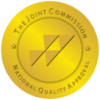Jump to Section
What Is Rubbing Alcohol and What Are Its Uses?
Rubbing alcohol is a solution that typically contains about 70% isopropanol and 30% water. Isopropanol or isopropanol alcohol is a colorless and transparent liquid with a slightly bitter taste and fruity odor. Rubbing alcohol is used in a wide variety of commercially available products like the following:
- Pharmaceuticals
- Hand sanitizers
- Disinfectants
- Aftershaves
- Cosmetics
- Sanitizers
- Antifreeze
- Cleaners
- Solvents
- Lotions
- Inks
The ingestion of isopropanol is the most common toxic ingestion reported to Poison Control Centers in the United States each year.
Drinking rubbing alcohol is dangerous and even fatal. Rubbing alcohol is a powerful cleaning solvent and can be very harmful if ingested. A small amount of rubbing alcohol can cause alcohol poisoning and death.
Symptoms of alcohol poisoning include vomiting, confusion, seizures, and slow or irregular breathing. If you or someone you know has consumed rubbing alcohol, seek medical attention immediately.
Drinking rubbing alcohol often occurs by people who are addicted to alcohol and are desperate for a fix.
Why Would Someone Be Inclined to Drink Rubbing Alcohol?
People would be inclined to drink rubbing alcohol because when rubbing alcohol is consumed. After all, it’s stronger than ethanol. Ethanol is the intoxicating agent; produced by distillation and sugar fermentation. Typically found in the most common alcoholic beverages.
People drink rubbing alcohol to engage in intoxication, or in a few cases, harm themselves. When people struggle with alcoholism, they might turn to substances such as rubbing alcohol to reach a specific level of intoxication.
Sometimes, rubbing alcohol is substituted for ethanol because of its widespread availability and much lower cost. For instance, a 16-ounce bottle of rubbing alcohol costs more than $1.00. Rubbing alcohol is available for purchase anytime at a 24-hour drug store.
It’s important to remember that rubbing alcohol is more potent than ethanol and quickly absorbed into a person’s bloodstream. However, these characteristics can allow a person to become intoxicated more quickly.
These characteristics are also responsible for the extreme dangers and risks of drinking rubbing alcohol.
When a person is drinking rubbing alcohol, they are at a much higher risk of developing alcohol poisoning; this is because the body processes rubbing alcohol much more quickly than ethanol, leading to a rapid and potentially fatal buildup of toxins in the bloodstream.
There is no safe amount of rubbing alcohol to consume. Any amount can be dangerous and even life-threatening.
How Dangerous Is It to Consume Rubbing Alcohol?
It is dangerous to consume rubbing alcohol. When it comes to an individual drinking rubbing alcohol, the digestive tract suffers the most if the person swallows a small amount.
The individual’s body metabolizes abnormally high alcohol levels into acetone. If rubbing alcohol is consumed to intoxication, it leads to organ damage. Since rubbing alcohol is a central nervous system depressant, side effects can include:
- Headaches
- Dizziness
- Inebriation
Also, since rubbing alcohol is a gastrointestinal irritant, it can cause:
- Vomiting blood
- Abdominal pain
- Nausea
Alcohol Percentages
The percentage of alcohol in beer, wine, and liquor varies. For example, beer typically contains between 3-6% alcohol (hard liquor) is up to 40% alcohol. Rubbing alcohol generally contains around 70% alcohol.
What Is Alcohol Poisoning?
Alcohol poisoning occurs when someone drinks a large quantity of alcohol in a short period. It can happen intentionally (binge drinking) or unintentionally ( drinking rubbing alcohol). Side effects include:
- Slow or irregular breathing
- Loss of consciousness
- Low body temperature
- Hypothermia
- Vomiting
- Seizures
- Confusion
Drinking a small amount of rubbing alcohol can easily lead to alcohol poisoning since the concentration of alcohol is so high. If left untreated, alcohol poisoning can lead to coma and death.
What Are Treatments for People Who Are This Far Into Addiction?


- Medical applications and devices used to treat withdrawal symptoms or deliver skills training
- Evaluation and treatment for co-occurring mental health issues such as anxiety and depression
- Long-term follow-up to prevent relapse
- Behavioral counseling
- Medication
There is a range of care with every tailored treatment program; the follow-up options are critical to success. Treatment should include both mental and medical health services. Follow-up care options are family-based and community recovery support options.
Most people can recover from alcohol addiction with the proper treatment and support. However, some people might need more intensive treatment to get back on track. Intensive treatment lasts a few weeks or months and can include inpatient or outpatient care. In some cases, people might need to stay in a residential treatment facility for an extended period.
Behavioral Therapies
This form of therapy can assist patients in the following areas:
- Persistence with other forms of treatment, such as medication
- Modifying behaviors and attitudes that are related to drug use
- Increasing healthy life skills
Generally, the forms of therapy include:
Multidimensional Family Therapy
MFT is for adolescents with drug abuse issues along with their families. MFT addresses a wide range of influences on drug use patterns; designed to improve the functioning of the family.
Cognitive-Behavioral Therapy
CBT can help patients recognize and change any thoughts or behaviors contributing to their addiction. During CBT, the patient learns how to avoid and cope with situations where they are most likely to engage in drug use.
Building a Support Network Through CBT
Behavioral therapy treats underlying mental health disorders, such as depression or anxiety.
One common type of behavioral therapy is cognitive-behavioral therapy (CBT).
It can also teach them how to develop coping mechanisms to deal with stressful situations without turning to alcohol.
Contingency Management
Also known as motivational incentives, this therapy offers patients rewards for abstaining from drinking alcohol. Positive reinforcement is the encouragement to stop engaging in drug use.
Motivational Interviewing
This therapy helps patients explore the ambivalence they may have about changing their drinking behaviors. It makes the most of an individual’s readiness to change their behavior to attend treatment.
12-Step Facilitation
This form of therapy introduces patients to the 12 steps of Alcoholics Anonymous and helps them work through each step. Alcoholics Anonymous (AA) is a well-known 12-step program that has helped people recover from alcoholism for over 75 years.
Sometimes, treatment is thorough at first; the patients attend several outpatient sessions weekly. After the patient completes intensive treatment, they can transition to regular outpatient treatment. Outpatient treatment meets fewer hours per week in an attempt to sustain recovery.
Patients can receive treatment in various settings with different approaches. Several behavioral therapies get used to treat those with an alcohol use disorder.
Medications can help treat alcohol addiction. Naltrexone is the most common; it helps reduce cravings and the urge to drink. Acamprosate and disulfiram can also be effective in treating alcohol addiction.
Outpatient Behavioral Treatment
This treatment option can be less expensive than inpatient care and convenient for patients with work or school schedules. Patients typically meet with counselors a few times weekly but do not stay overnight at the facility.
Outpatient treatment can last anywhere from a few weeks to several months, depending on the patient’s needs. Partial hospitalization is a type of outpatient care that can be very intense, with patients attending counseling and therapy sessions for most of the day, several days each week.
Many inpatient and outpatient treatment facilities can help people detox and begin the road to recovery. Outpatient behavioral treatment includes a variety of programs for patients who attend a behavioral health counselor. Most of the programs involve individual and groups, or both.
Inpatient and Residential Treatment
This treatment option can be very effective, especially for patients with more severe issues, including co-occurring disorders. The licensed residential treatment facilities offer 24-hour intensive, structured care, including medical attention and safe housing.
Typically, these programs aim at assisting patients in living a crime-free and drug-free lifestyle after treatment. Examples of residential treatment settings include therapeutic communities and inpatient rehabilitation programs.
Therapeutic Communities
These are highly structured programs where the patients remain at the treatment facility. Generally, the stay is between 6 to 12 months.
The whole community, including patients in recovery and the treatment staff, acts as crucial agents of change. Meanwhile, the patient’s understanding, behaviors, and attitudes are associated with drug use.
Short-Term Residential Treatment
Typically, this focuses on detoxification and initial intensive counseling and treatment preparation in a community-based setting.
Recovery Housing
This option provides short-term, supervised housing for patients. The housing can be transitional, which means that it can help patients ease back into society. It often follows other types of residential and inpatient treatment. Recovery housing can assist individuals in making the transition to a healthy, independent life.
Interim Housing
Interim Housing, known as Sober Living Homes, provides a safe, supportive environment for individuals in early recovery.
Long-Term Residential Treatment
Long-term residential treatment can last up to a year or more. It can provide intense, round-the-clock treatment. This treatment can be especially beneficial for people with chronic addiction who need more time to recover.
The residential treatment facilities might use various therapeutic approaches. Some include:
- Dialectical behavioral therapy
- Cognitive behavioral therapy
- Motivational interviewing
- Experiential therapy
The length of stay can vary based on each patient’s progress in treatment. Most patients stay anywhere from 30 to 90 days. Some patients might require longer stays, depending on their individual needs.
Aftercare and Alumni Services
After a residential treatment facility, patients will need to continue with care to prevent relapse. Aftercare can include different programs, such as sober living houses, outpatient treatment, 12-step programs, and continued individual and group therapy.
The main goal of aftercare is to help patients. Several resources are available to get you started on the road to recovery. Alcohol addiction is difficult to overcome, but treatment can help you or your loved one get on the path to sobriety and healthy life.
Rubbing Alcohol Addiction Awaits at Northern Illinois Today
If you or a loved one are struggling with an addiction to rubbing alcohol, please reach out for help. Drinking rubbing alcohol can be deadly; our qualified treatment professionals can help.
There are many resources available to assist you in finding the treatment that you need. Remember, you are not alone in this fight. People care about you and want to see you recover. Seek help today and begin your journey to a better tomorrow.


Licensed Physician and Surgeon
Dr. Beth Dunlap, a board-certified addiction medicine and family medicine physician, and is the medical director at Northern Illinois Recovery Center. She is responsible for overseeing all the integrated medical services at both campuses. Beth completed medical school, residency, and fellowship at Northwestern University, where she continues to serve on the faculty as a member of the Department of Family and Community Medicine. She has extensive experience in addiction medicine at all levels of care, and her clinical interests include integrated primary care and addiction medicine, harm reduction, and medication-assisted treatment.



